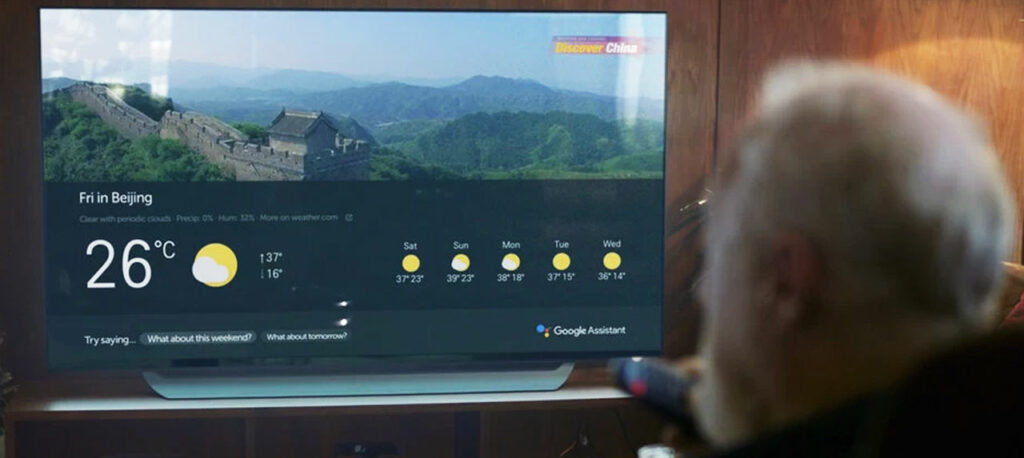
TV: The Obvious Smart Home Interface?
Ended soon
As smart homes become increasingly sophisticated, integration trends are moving toward the total convergence of home connectivity, with all IP devices addressable by the user. The potential complexities for the consumer will be daunting without a simple, yet powerful control medium. Fortunately, such a medium already exists; already resident in virtually every home and often in every room. The TV can – and will – become a key conduit for accessing, controlling and configuring connected home devices.
The Right Solution at the Right Time
In the home environment, the TV serves as the central source of information and media for the entire family. It is the one device that every family member is generally fluent with operating. Today, families often interact with smart devices through a confusing array of controllers. According to Deloitte, the average US household with smart home devices has a total of 25 connected devices across 14 different categories. Even well-unified installations typically incorporate a multiplicity of controllers, including keypads, smartphones and voice. Too many consumers strain under this complexity.
According to Strategy Analytics, smart TV ownership will surpass 90% of U.S. homes by 2024. Sooner than later then, it won’t be necessary to use multiple controllers, all having different navigation schemes that easily confuse consumers, or make it more difficult for them to access wanted content. As smart home tasks and management become ever more complex, the TV-as-controller makes perfect sense; a large, voice-compatible, centralized display that everyone knows how to work, with enough real estate to comfortably present all the needed information. This will be increasingly important as more smart devices and applications enter the market over time.
Order From Chaos
One of the sternest challenges for smart home integrators is the need to provide consistent interaction with the multiplicity of devices in the home. In typical cases, these devices come from multiple manufacturers, using different protocols and access points. For this reason, it is critical that the industry works to provide the fullest level of interoperability possible between all these devices, to make sure consumers can easily address all their smart home products in a simple way.
The TV is the logical device to deliver the simplest solution. Over the years, consumers have become used to their smart TVs and are accustomed to operating the TV as the source of videos, music, photos, weather and other information. Adding other connected apps is an organic and inevitable extension. Naturally, there are still the challenges of incompatibility, legacy devices and backward compatibility. However, the TV future holds great promise to bring uniformity and interoperability to the home IoT universe. It will be ironic when manufacturers and integrators realize that the most logical smart home controller had been staring at them all this time.
How Manufacturers Can Help
Manufacturers can and should do a better job in explaining the features and benefits that their solutions provide in building smart homes. Consumers are looking for simple ways to expand the control of critical elements of their home life, from security to energy management to A/V distribution. Manufacturers can educate both dealers and consumers on how the systems that are out there today can be integrated to provide the level of simplicity that end users want.
Interoperability standards like Matter will help speed an expanding market by bringing compatibility and consistency to the experience, no matter what brand the consumer ultimately decides to buy. To that end, it is important that similar innovations continue to happen, and for manufacturers to make sure that they can effectively communicate and guide both integrators and consumers to the right solutions.
How Integrators Can Help
The contemporary smart home deployment calls for security control to co-exist with other home systems such as climate, lighting and entertainment. Consumers want simplified control over these systems, which DIY products aren’t good at doing in a whole-home context. Despite some claims of scalability, most of these solutions are designed for one key application, often just security.
To gain a unified experience, consumers will look to professional integrators to provide installation, configuration and programming. Just as the trade has benefited from the dramatic popularity of integrated A/V systems and whole-house A/V delivery, with new and bigger display devices, and user-friendly interfaces, they will similarly benefit from making complex smart environments easier to navigate. Consumers want all the capabilities but not the difficulties; professionals can help deliver the wanted simplicity.
To be sure, smartphone and keypad controls won’t be going away tomorrow, and despite some signs of the market flattening, voice controllers are also here to stay. So are televisions, and it’s time to exploit all the possibilities of this keystone smart device.
# # #
Senior Consultant Mike Fidler is a former President of the UHD Alliance, as well as CEO of Digeo and SVP for Sony and Pioneer. He has directed the launch of numerous keystone CE technologies, including A/V Receivers, DVD, Blu-ray, 4K, DVR and Advanced IP Cable STBs. He also helped drive the conversion of the theatrical exhibition industry from film to digital.

